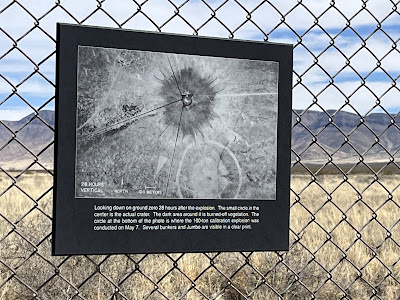Vincenzo Camuccini was an Italian painter who specialized in Classical historic and religious paintings. He was born in Rome and trained as a picture-restorer before turning to painting. He eventually gained prominence as a portrait artist, painting some of the most notable people of his day.
The Death of Julius
Caesar was his first independent work. The first version was completed
around 1798, but he disliked it and started over; the second version was
completed in 1806. As you might guess from the name, it depicts the death
of the first Roman emperor at the hands of the Senate on the Ides of March in
44 B.C. Caesar was stabbed 23 times. The Senators claimed to be
acting out of fears that Caesar was undermining the Republic, but despite their
actions it led to a civil war and the Republic would be ruled by emperors for
the next 500 years until its fall.
What I like about this picture is the variety of emotions expressed in it. Caesar, noble and larger than life even as he falls, and the senators run the gauntlet from passion and hate to shame and hesitation. The scene is incredibly dynamic. This was one of the easiest to recreate. Have bedsheets and wide range of easily accessible knives, will stab.
Apparently, if you're doing recreations, you can't get away from the Pre-Raphaelites. They pop up everywhere like daisies.
Waterhouse's work, if you remember from previous posts, focused mostly on women from Greek mythology and Arthurian legend. He was born to painters and grew up among artists of many kinds. Many of his paintings are based on works from Homer, Ovid, Shakespeare, Tennyson, and Keats. He is most famous for his string of Ophelia paintings, which depict the doomed heroine from Hamlet. Waterhouse died from cancer in 1917, and is buried in London.
The painting is named after Boreas, the Greek god of the north wind. It is notable for having been "misplaced" for some 90 years, then sold at auction for $1.3 million. Like many other pieces of Waterhouse's, it depicts a young woman in nature. The setting is less idyllic, the rough northern wind buffeting the young woman, but she still has a serenity and stillness in the storm that harkens back to Greek statuary. The painting is deceptively simple; the longer you look the more detail you see, from the intricate folds in her shawl to the ornate pattern on her dress to the windblown flowers about her knees. Incredible.
It was
challenging to recreate this one because while we have no shortage of wind in
our corner of Texas, it doesn't blow on demand or in the direction you want,
even when you ask nicely. Cloth doesn't always billow artistically,
either. Oh well.
Frank Cadogan Cowper
is an English Artist who worked in oils, tempera, and watercolor; he also
worked as a book illustrator and worked on a mural in the Houses of Parliament
with several other artists. He is sometimes described as "the last
Pre-Raphaelite" because although he was not one of the original
brotherhood, his paintings echoed the rich colors, complex emotions, and detailed compositions for
which the Pre-Raphaelites were celebrated.
Vanity is one of Cowper's most famous paintings. The title refers to paintings popular in the 16th and 17th centuries known as vanitas, which were meant to remind the viewers of their mortality. We are meant to realize that everything in the painting will fade and die, and so shall we. The young woman is typical of Pre-Raphaelite subjects, richly dressed and with long reddish hair. She is mostly dressed in the style of the Italian Renaissance, but a few of her accessories--the silver hand mirror and string of pearls--were more common to the early 1900s when Cowper was painting. It was perhaps a way of making this painting and its theme more universal.
I don't have a lot to say about this production. J is typically a one-shot model, she just seems to get it. The grapes came from our own vine in the backyard. The one real change I'd make is that I would have put down a yellow cloth, I missed a detail on this one.


















































